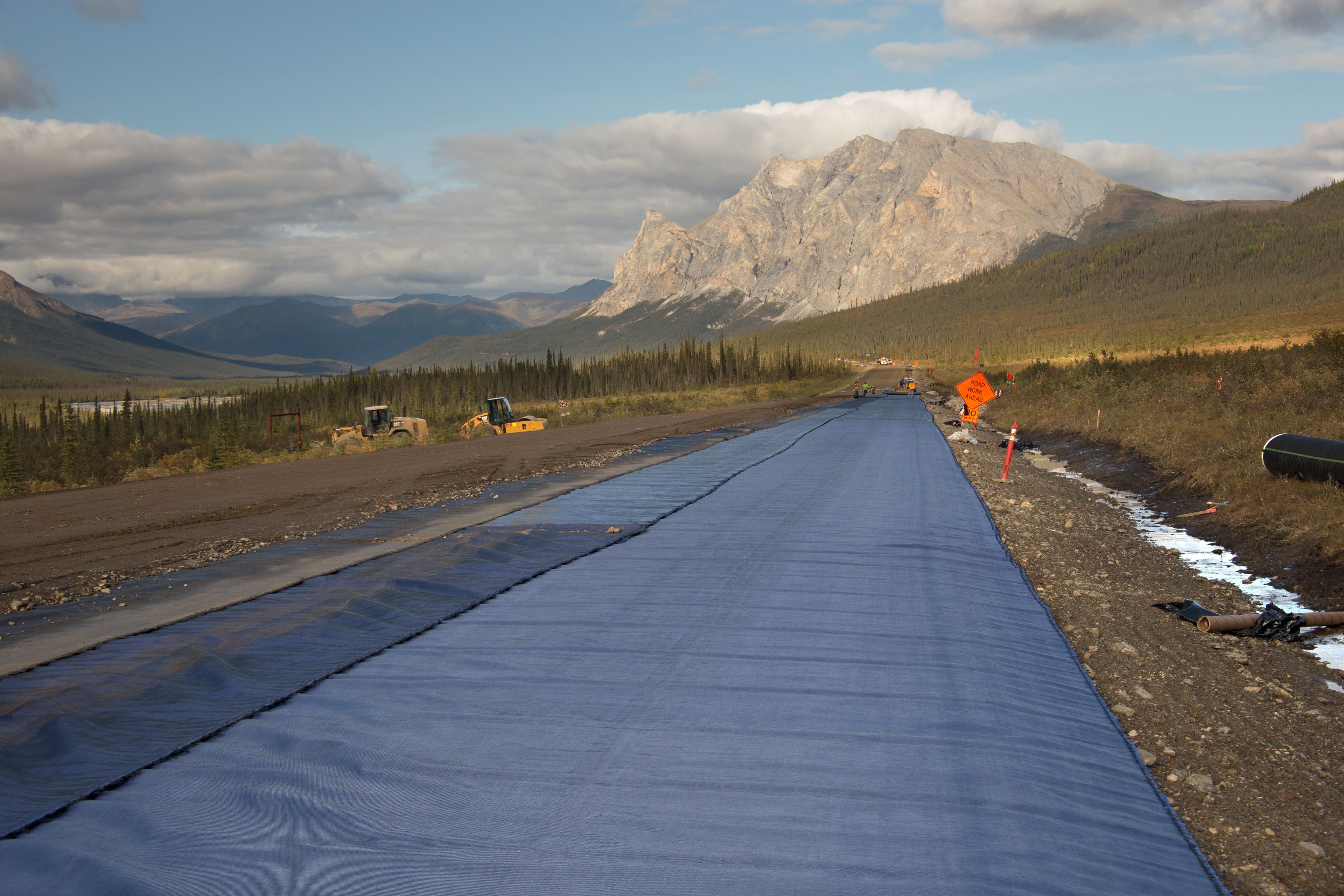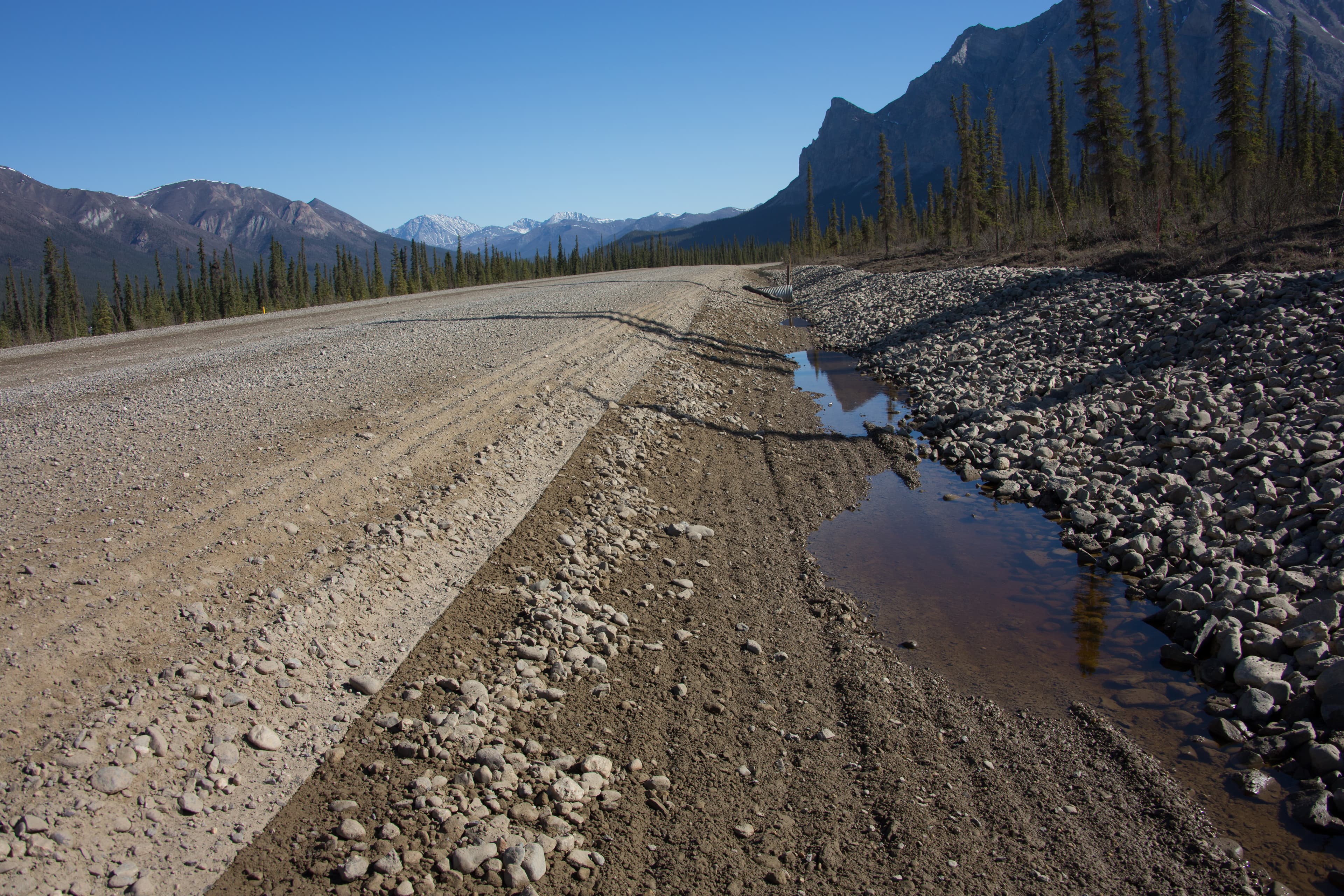Overview
The Dalton Highway in Alaska, one of the most isolated roads in the United States, supports a significant amount of truck traffic. It is the sole ground transportation route connecting the oil fields at Prudhoe Bay with Fairbanks. This 500-mile (805-kilometer) highway experiences degradation due to the extreme northern environment, particularly from frost heave and thaw weakening. A notable problem area was at Milepost 110, known as Beaver Slide. Here, severe deterioration occurred during the spring thaw due to shallow groundwater running downslope under the highway on an 11% grade. This water pooled in the road embankments, causing frost boils that lead to road damage.
Challenge
The Alaska Department of Transportation selected Beaver Slide for a field validation study of the MIRAFI® H2Ri moisture management system, due to its deterioration issues and the need for frequent maintenance. The University of Alaska Fairbanks was investigating the effectiveness of MIRAFI H2Ri in building more resilient roads in northern climates, where frost heave damage is common. The full-scale field study targeted a known problematic area for the Department of Transportation.
Solution
The site was monitored for a year by researchers from the University of Alaska Fairbanks and the Alaska Department of Transportation. Sensors confirmed that MIRAFI H2Ri successfully transported water across the road section, preventing the water from boiling through the roadway and creating soft spots. Observations revealed that the section installed with MIRAFI H2Ri was in particularly good condition, unlike the areas without it, which were sometimes impassable. The unique strength characteristics of MIRAFI H2Ri, combined with its hydrophilic and hygroscopic wicking fibers, proved to be an ideal solution for ensuring stability and robustness in the Beaver Slide area. The system's suitability for staged construction allowed the roadway to remain open during construction, minimizing traffic impact and reducing both costs and construction time.
For further reading on how the patented design of MIRAFI H2Ri enhances performance, click here to read our technical note.

